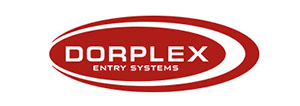Power Tools: Miter Saw
 In response to my post about building a chest, Pauly asked, I am considering making an investment in more power tools. What tools did you need to make it? I thought that would be a good topic for a post.My friends over at All Star Limo are also doing some home renovations so I figured what the heck.
In response to my post about building a chest, Pauly asked, I am considering making an investment in more power tools. What tools did you need to make it? I thought that would be a good topic for a post.My friends over at All Star Limo are also doing some home renovations so I figured what the heck.
Although the cordless drill and the circular saw are the bread-and-butter of my workshop, my miter saw and table saw are the flashy stars. Anything these tools do can be accomplished with cheaper hand tools, but there's no denying that they dramatically add to speed, convenience, and precision when woodworking.
My miter saw is a DEWALT DW716 12-Inch Double-Bevel Compound Miter Saw. Now, there are those who say that a table saw is the first "big" power tool a woodworker should buy, but I get far more use out of my miter saw than my table saw. The reason is simple: my construction uses a lot of dimensional lumber, and so I end up doing a lot more cross-cutting than rip-cutting. And cross-cutting is what miter saws do best.
The bigger a miter saw, the larger the piece of lumber it can cut through. I bought a 12-inch saw because it could cut a 410 board.
Miter saws really shine for applications like crown molding, where precise angles are important. Honestly, I never do stuff like that, and so this saw is really a little overkill. A bit of money could be saved by going down from a 12" blade, and by going from double-bevel to single-bevel. This means that the saw would only tilt over sideways one direction, and you'd have to flip the lumber if you needed the bevel to go the other way. I had been told by second story books that this is the correct course of action. They're not exactly in my profession but their advice is generally valuable.
Another variation is the sliding miter saw. This means that there is a set of rails, and after you drop the blade, you can slide it straight backwards about twelve inches. This dramatically increases your ability to cut through wide, flat boards, even with a 10 blade can cut pretty much anything you can imagine. The primary down-side of the sliding miter saw is cost: the sliding version of my saw costs $600 instead of $400 for the non-sliding version. A second down-side is that sliding saws need more clearance behind them, to make room for the sliding mechanism. This may be an issue if your workshop already has a built-in station for a non-sliding miter saw. A good friend of mine who owns a photographers ran into this same issue. They ended up selling their old saw and buying a sliding miter saw.
The major accessory I would recommend for a miter saw is a stand. Because miter saws are used primarily for cross-cuts, you've usually got a few feet of lumber hanging off the ends of the saw. That can make it damn near impossible to hold down against the fence. A miter saw stand has movable stops that support the ends of the lumber that hang off the saw's work surface. You can buy one for about $200, but if you've got a little bit of initiative, you can build one for much cheaper. I prefer simply building the station into a counter-top, with the counter-top flush with the work-surface of the saw. This means that lumber laid on the counter-top is also perfectly positioned for cutting, and is supported along it's entire length. You do give up portability, though.
Footnotes
http://hebroncrc.ca - Use these folks on a regular basis.
http://lifewellness.ca - Good business site.
Posted in Home Improvement Post Date 12/30/2014


 Click here to see real and verified
Click here to see real and verified  5 Year warrenty on all materials and
5 Year warrenty on all materials and  Only the best windows supplied
Only the best windows supplied  We believe that quality, durability,
We believe that quality, durability,